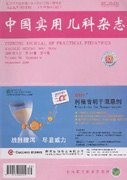Previous study using Eysenck personality questionnaire,Achenbach children’s behavior checklist,SF-36 quality of life questionnaire,Cochrane Database of Systematic Reviews and other methods found that the children with thalassemia major had psychological behavior problems,such as poor social competence,anxiety,depression,social withdrawal,hyperactivity. Their parents experienced shock,denial,sadness and anger,adaptation and cognitive psychological changes,then gradually adapted over time. Patients education, cognitive therapy,behavioral therapy,mental resilience training,focused coping model of intervention in the treatment of children with thalassemia and their parents’psychological behavior problems can help them better cope with daily life,fulfill the role of society,and achieve better quality of life.

